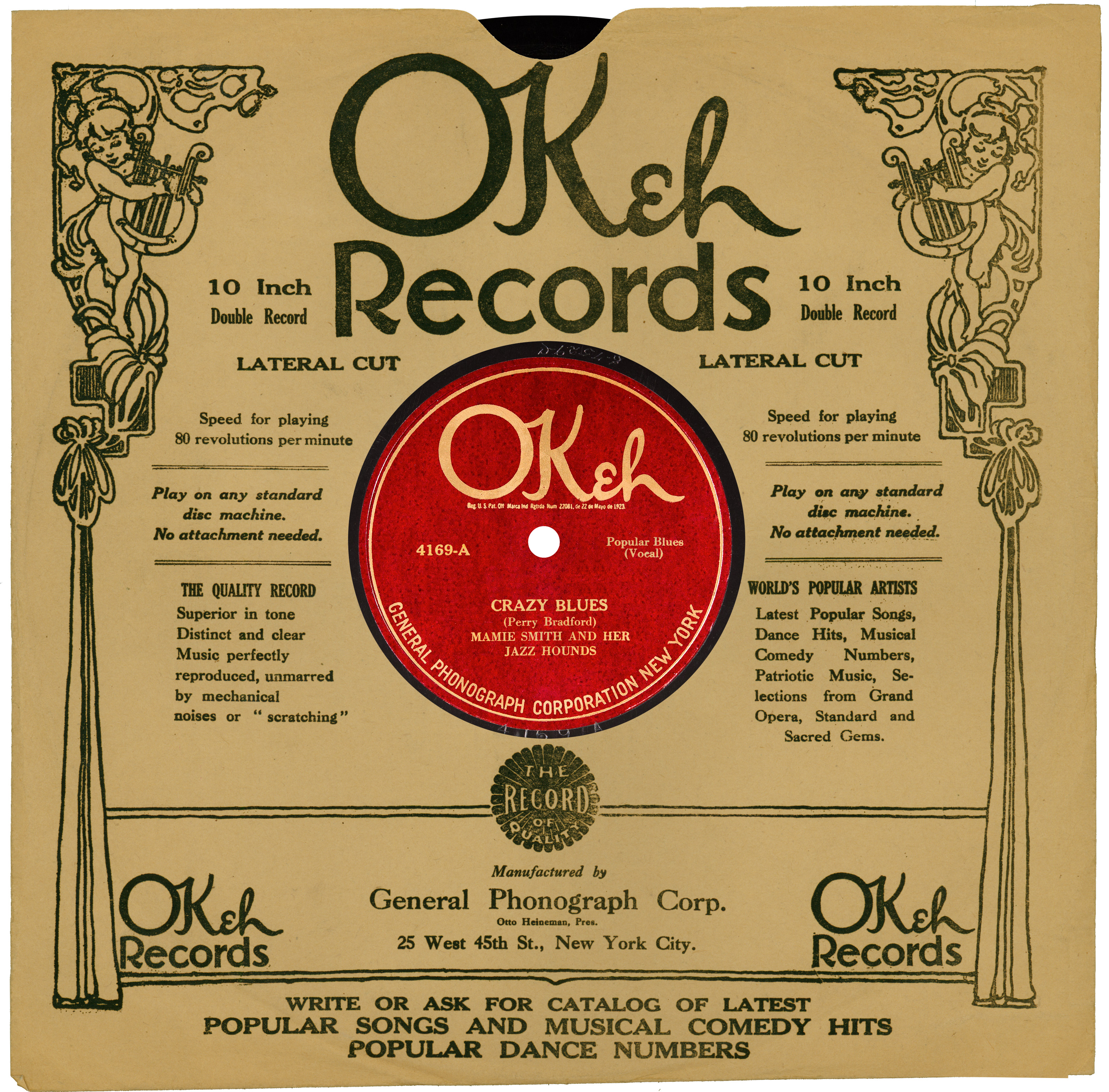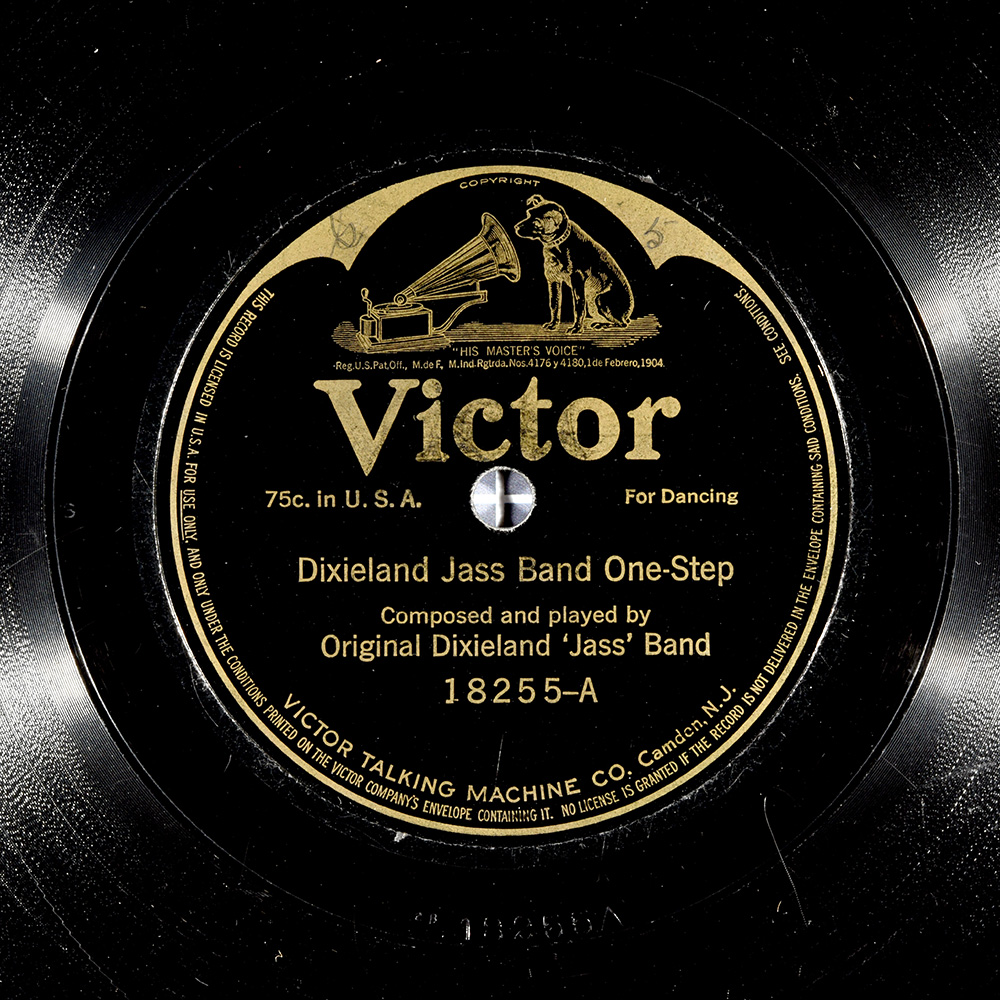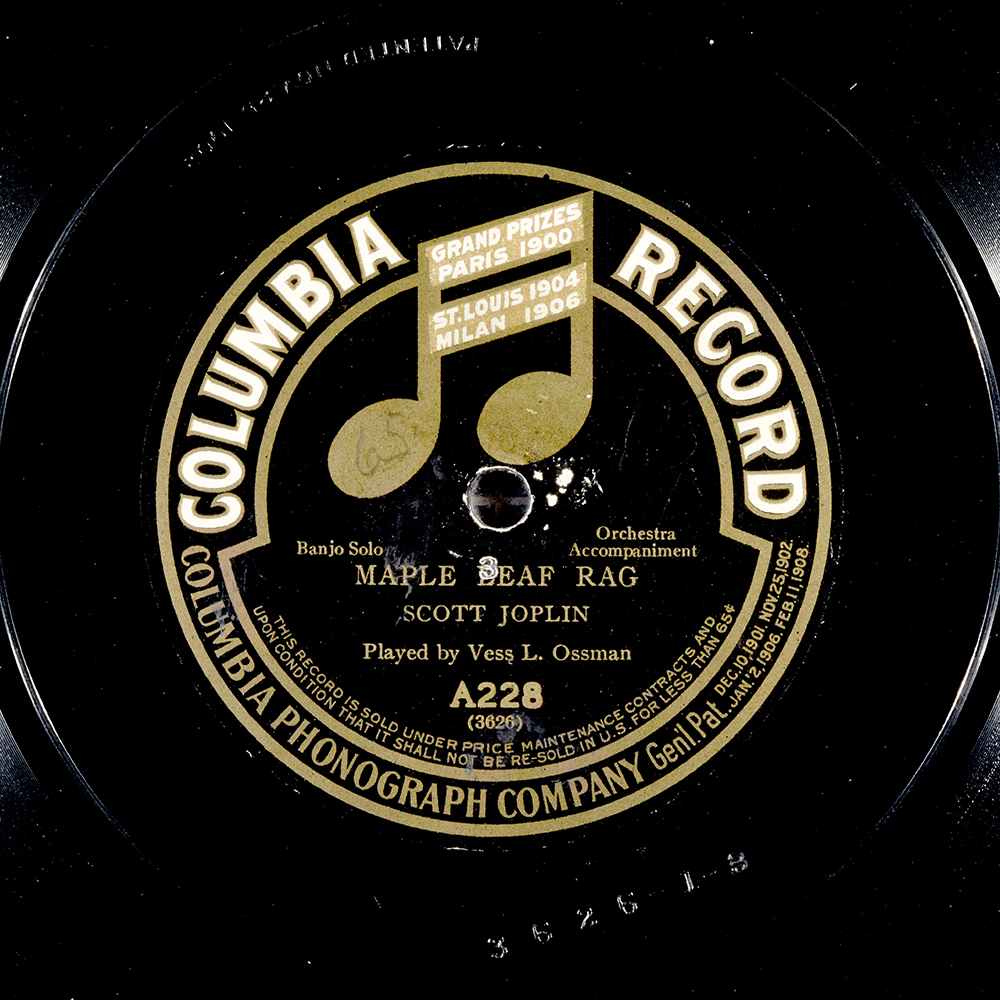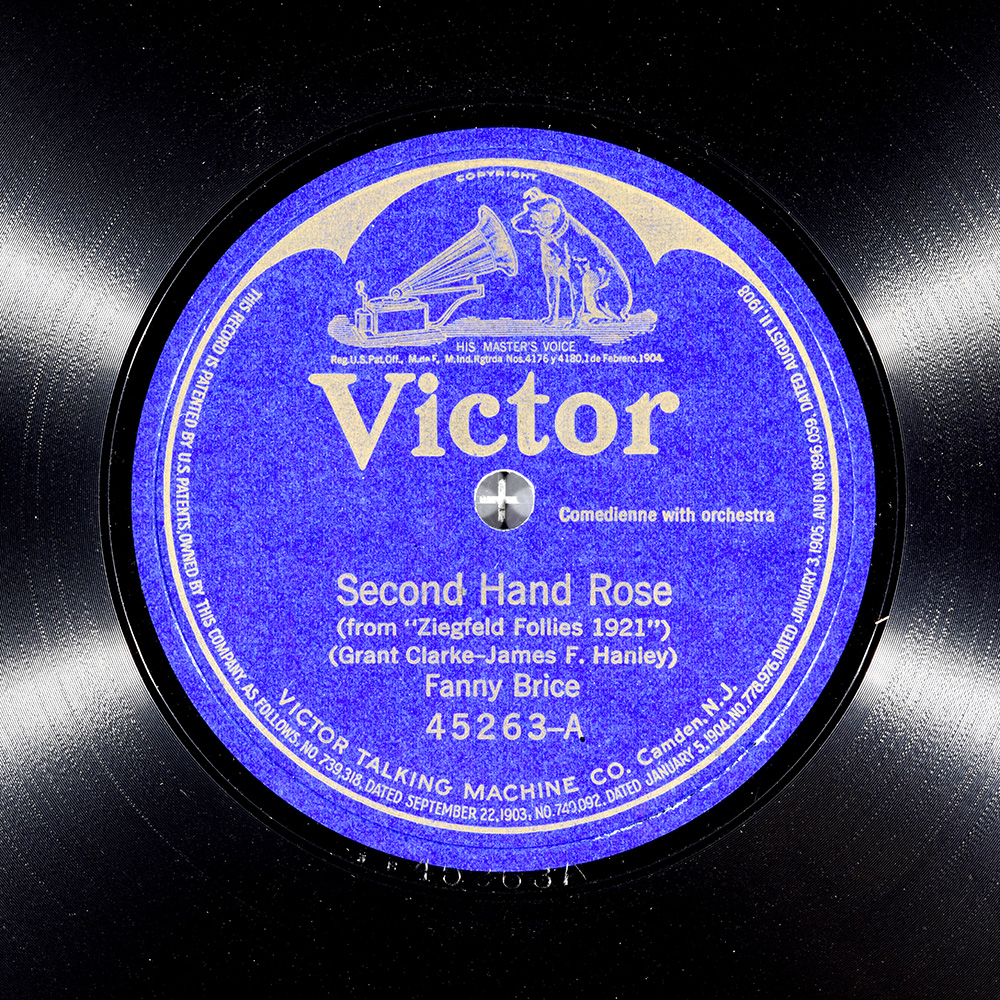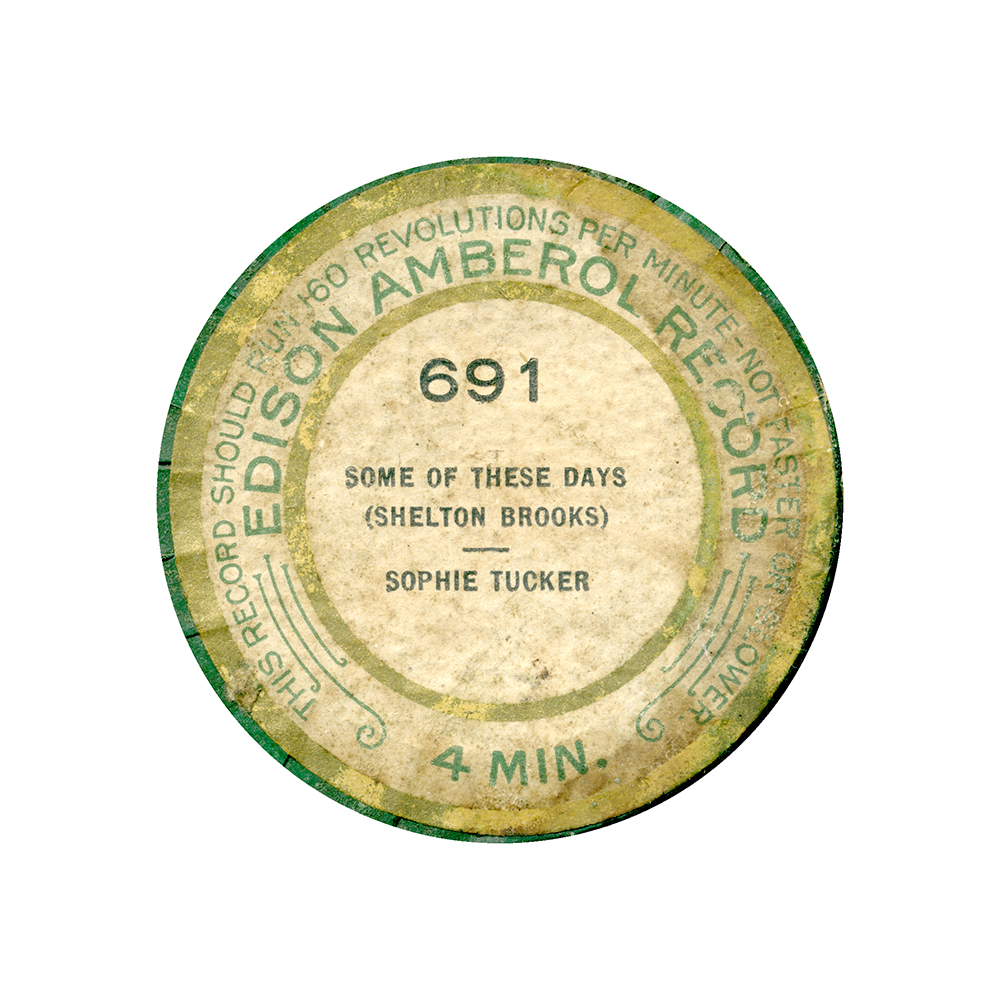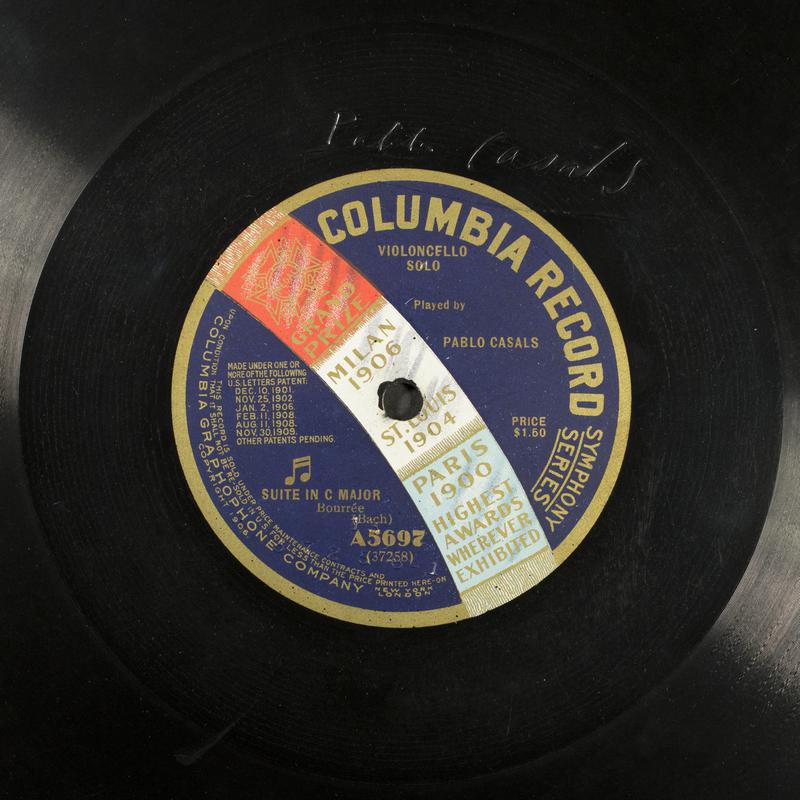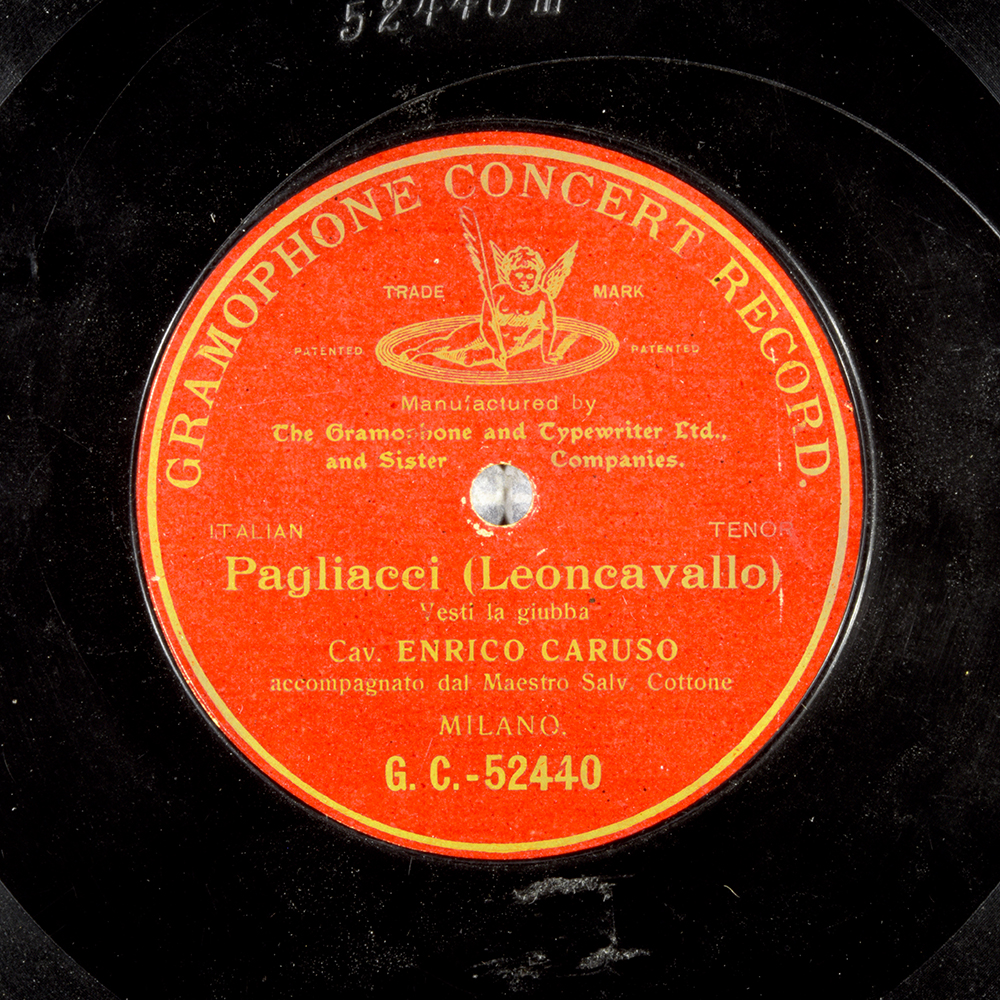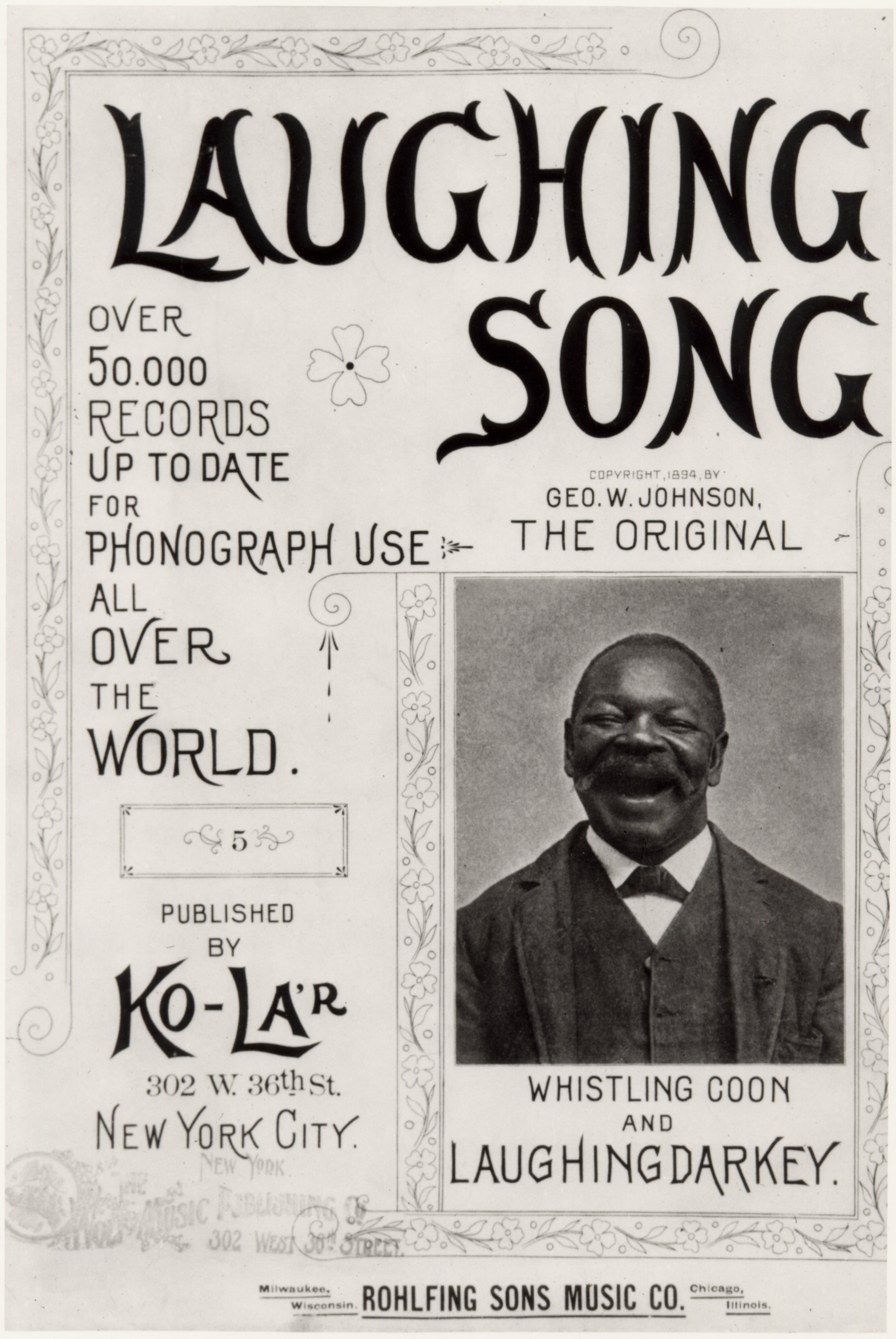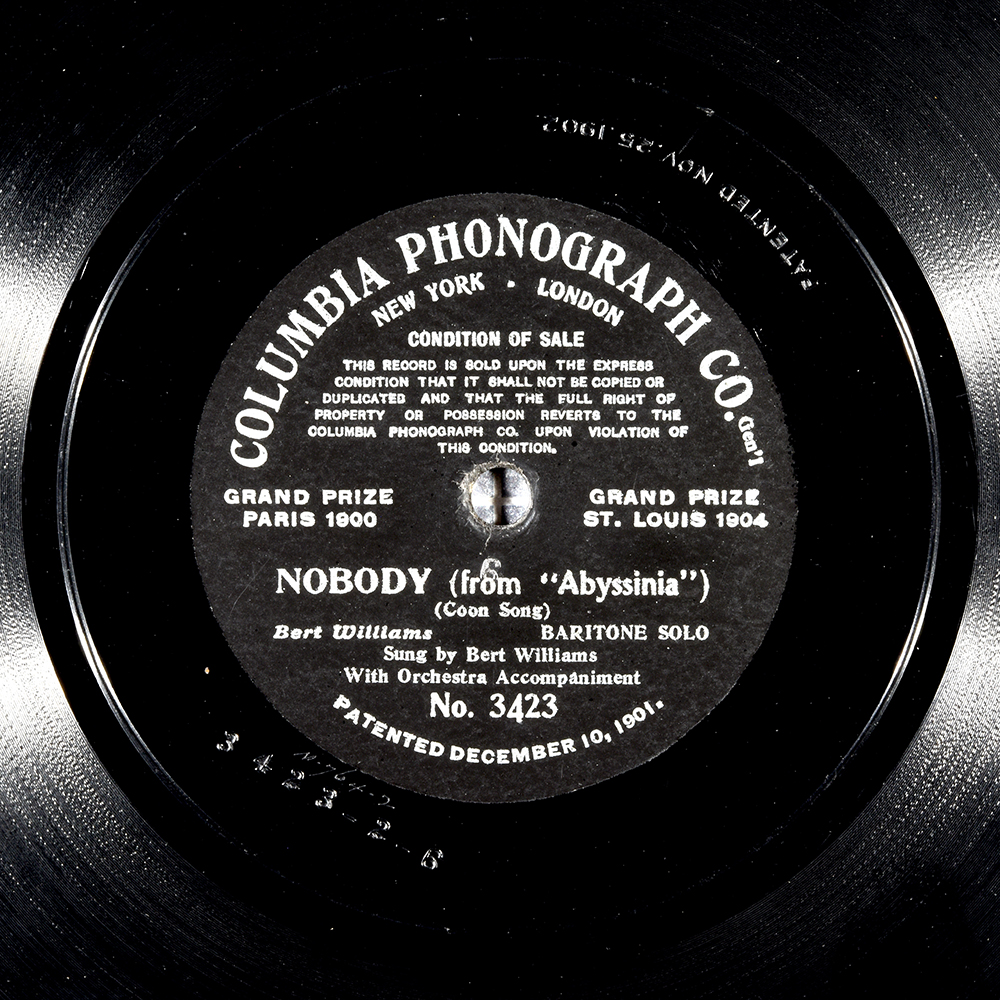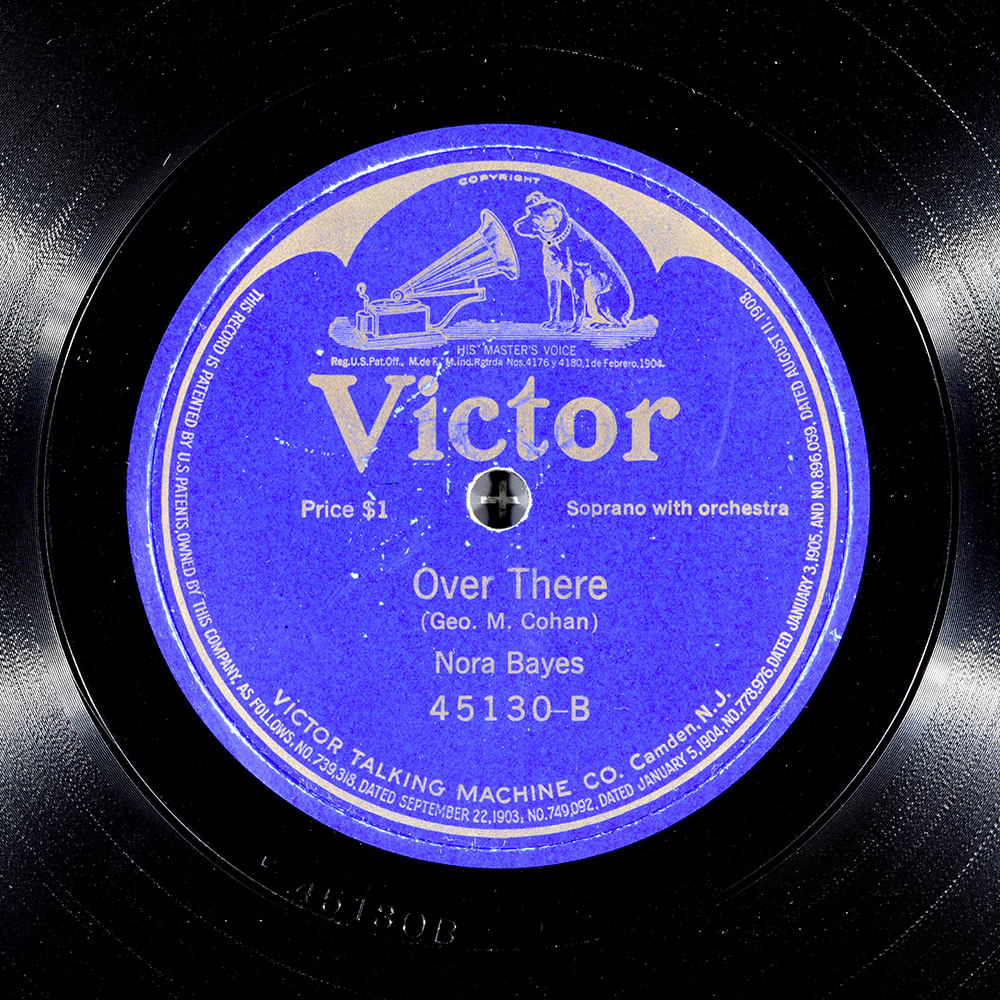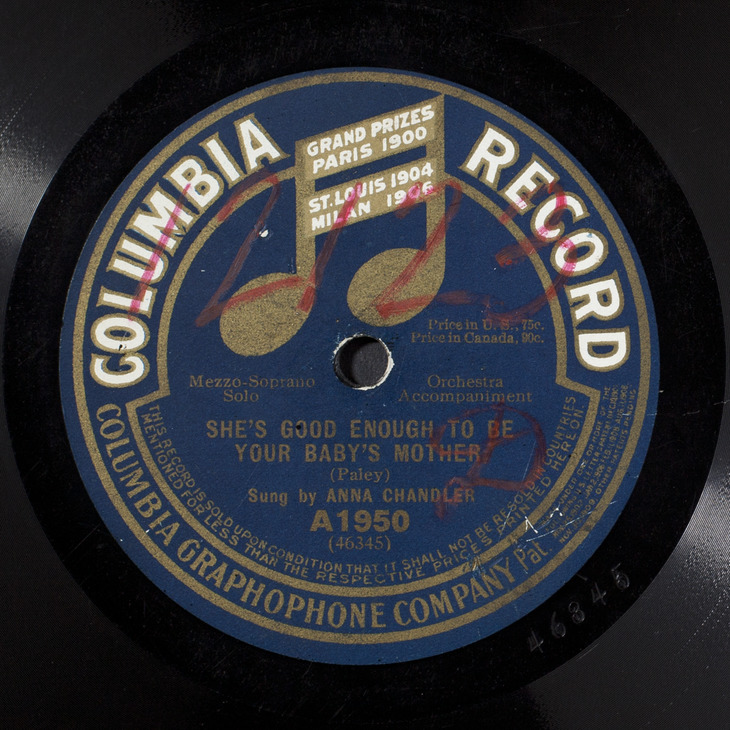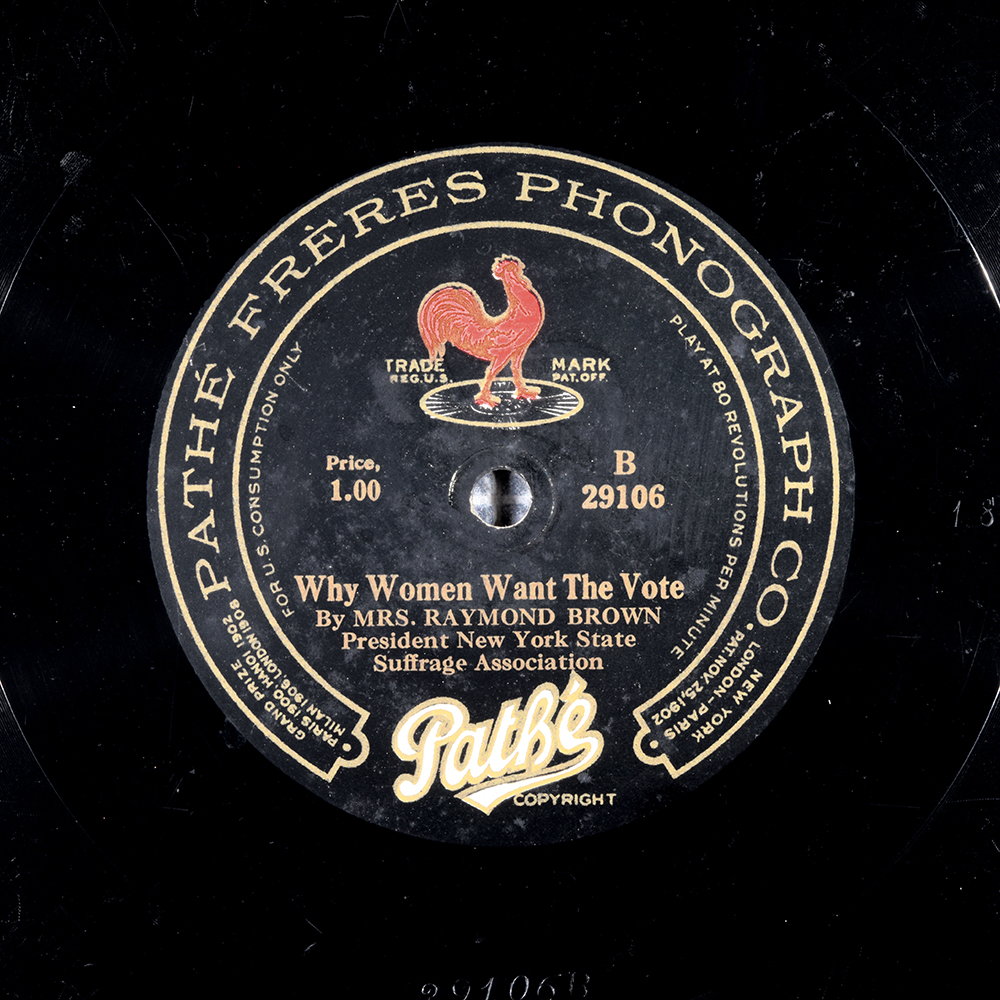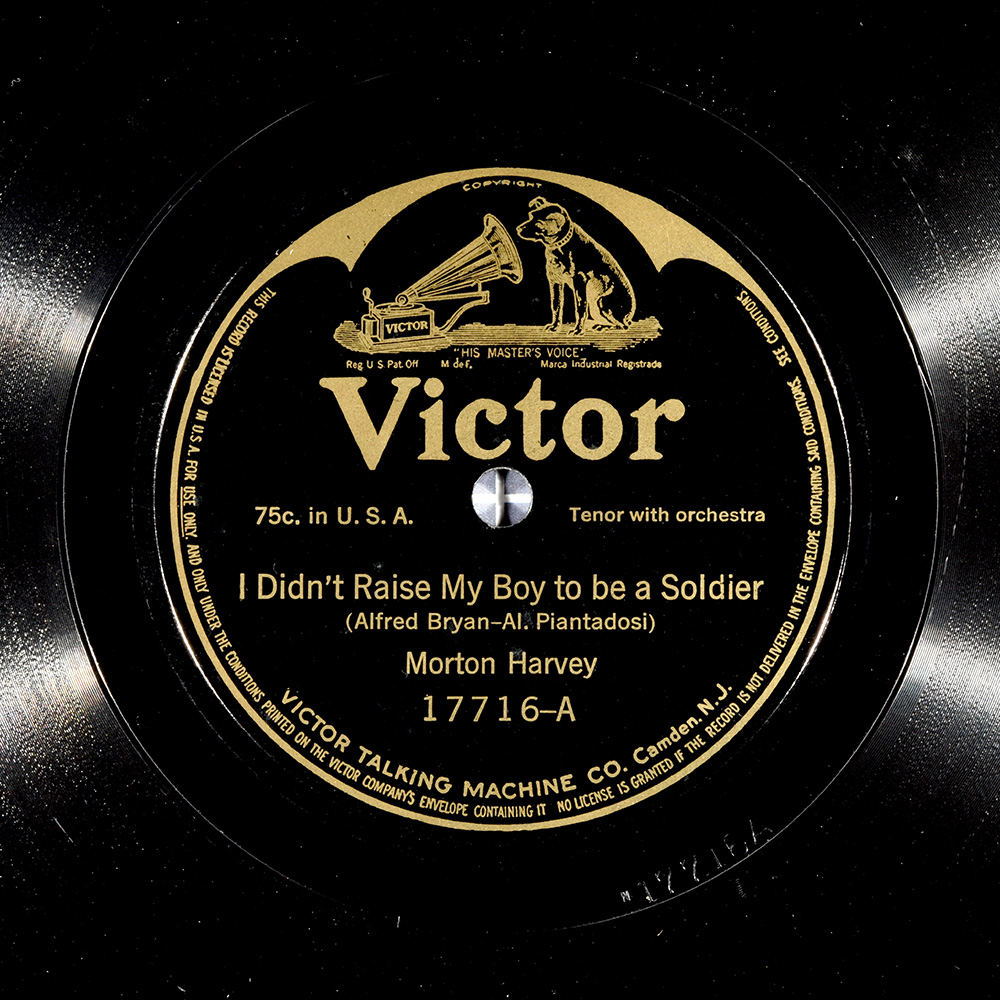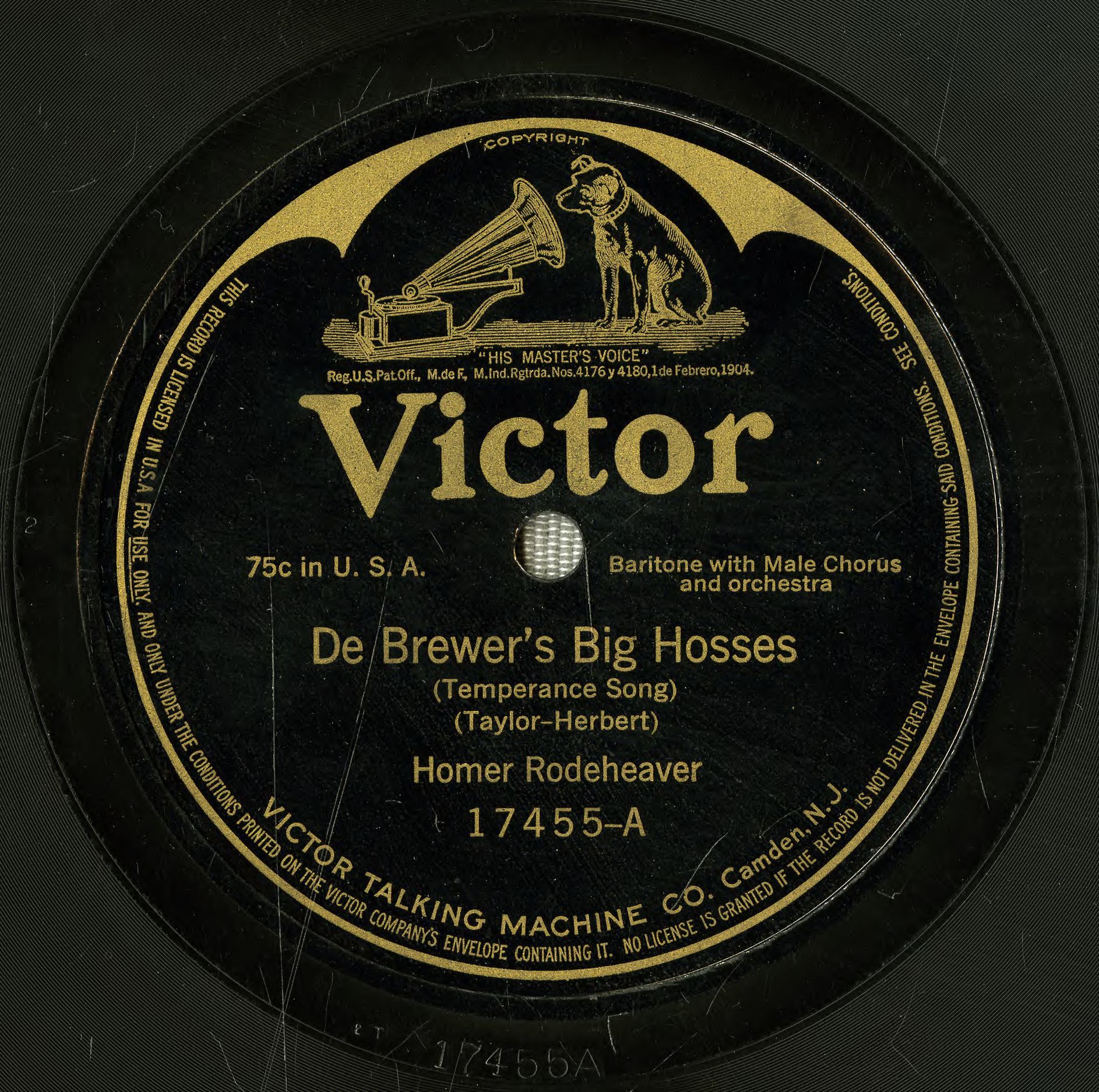
Ten Notable Pre-1923 Recordings
|
To mark the inauguration of the first U.S. public domain for sound recordings, on January 1, 2022, ARSC has surveyed its members to identify ten notable recordings that will serve as an introduction to the treasure trove of sound that now becomes freely available to the public.1 An estimated 400,000 recordings, all released prior to 1923, will enter the new public domain on January 1st.2 (Additional years will be added in the future.) A panel of seven experts identified 60 candidates for an initial list. Then, ARSC members at large were invited to vote on which ten they felt best represented the era. In addition, they could add candidates of their own. All genres and types of recordings were eligible, including popular, classical, spoken word, and recordings reflecting important social movements of the period. The list of ten consists of the recordings that got the most votes in each category. This is followed by a list of all other nominees. If you click on a title you will be taken to a site where you can hear the audio. Various sites are used. To return to this page use the "back" button on your browser. The Association for Recorded Sound Collections is a non-profit organization dedicated to the preservation and study of sound recordings, in all genres of music and speech, in all formats, and from all periods. ARSC is unique in bringing together private individuals and institutional professionals--everyone with a serious interest in recorded sound. Some recordings of this period contain offensive language and racial stereotypes. The views and historical characterizations expressed in the description of recordings do not necessarily represent the views of ARSC. For press inquiries contact ARSC Executive Director Nathan Georgitis, 541-743-5636. Images below courtesy of The Library of Historical Audio Recordings at i78s, The David Giovannoni Collection, The Discography of American Historical Recordings, The Library of Congress, and Tim Brooks. Ten Notable Pre-1923 Recordings
Recordings About Major Social IssuesIn addition to notable examples of popular and classical recordings, ARSC's experts cited notable examples of recordings related to major social issues of the era.
Runners UpIn addition to the foregoing, the expert panel and ARSC members at large nominated many other pre-1923 recordings for consideration. "After the Ball"--George Gaskin, cylinder recording (c.1893+) While there are many recordings of this iconic Tin Pan Alley song, this 1890s version on an unknown cylinder label makes one feel like they traveled back in time to the front row of a vaudeville show. Gaskin was one of the earliest commercial singers to record and was an influence for many American singers in the decades that followed. "Alexander's Ragtime Band"--Arthur Collins and Byron G. Harlan, Victor 16908-B (1911) & "The Oceana Roll"--Eddie Morton, Victor 16908-A (1911) With "Alexander's Ragtime Band," Irving Berlin was here to stay. But the record industry proved with Collins and Harlan's hit record of the song that it had a lot of sway over what would become popular. Seemingly though, a lot of people were buying Victor 16908 for its "A" side, "The Oceana Roll," by vaudeville singer Eddie Morton--forever waxing the sound and syncopation of "real" ragtime. "Aloha oe"--Hawaiian Quintette, Victor 18577 (1913) Hawaiian records were hugely popular in the 1910s, and this is an iconic song. "The Arkansaw Traveler"--Len Spencer, Victor 1101 (1901) Historians of country and folk music on record can look to this routine as one of the granddaddies of their arts. The humor of Len Spencer's dialogue between traveler and squatter (playing both parts) could be on Hee Haw, and Charles D'Almaine's fiddle-playing (violin, they called it) rivals the best of the rest. "Battle of Santiago"--Haydn Quartet, Victor 1330 (take M-12, 1903) The Spanish-American War of 1898 was the first major American military conflict to be reflected in contemporaneous recordings. A number of topical song selections were marketed during the war itself, but "Battle of Santiago" went on to hold a place in the catalog for some years afterwards: a reenactment by a versatile vocal quartet of a naval engagement off the shore of Cuba, with this version including John Woodward Philip's famous line: "Don't cheer, boys, the poor devils are dying." "The Bonnie Blue Flag"--Polk Miller & His Old South Quartet, Edison Amberol 389 (1909) Veneration of the Lost Cause was a deep-rooted theme in American entertainment in 1909 when Polk Miller, Richmond Virginia druggist and former Confederate artilleryman, recorded this performance with a quartet of Black singers. Nostalgia for the antebellum South pervaded American musical fare for a century after the war--from ever-popular minstrel shows, countless vaudeville acts and myriad "mammy songs", to higher-class standards in the American Songbook. "Brindisi" from Lucrezia Borgia (Donizetti)--Ernestine Schumann-Heink, Columbia 1379 (1903) The great contralto, whose career spanned nearly 60 years, in one of her favorite showpieces, displaying her remarkable range, notable trill and thrilling brio. "Brindisi"--Ernestine Schumann-Heink, Victor 88188 (1909) I think Schumann-Heink's 1909 Lucrezia Borgia Victor version is preferable to the 1903 Columbia. "Bugle Call Blues (aka Bugle Call Rag)"--Friar's Society Orchestra (New Orleans Rhythm Kings), Gennett 4967 (1922) This band brought jazz further than the Original Dixieland Jazz Band by their arrangements, instrumentation and solo work. "Can't Yo' Heah Me Callin' Caroline"--Vernon Dalhart, Edison 80334 (1916) Dalhart's debut recording is not only a lovely performance in its own right (of a typical 1910s ballad), but it heralds the arrival of a performer who -- love him or hate him -- would become extraordinarily successful in the 1920s. "Celeste Aida"--Arthur Pryor, Victor 31487 (1905) Recorded nearly two years after Enrico Caruso's definitive version, Arthur Pryor's "Celeste Aida" remains one of the finest examples of the trombone as an extension of the voice. Pryor's nuance and inflection indicates his familiarity not only with the music, but the words, also. "Cohen Buys a Wireless Set"--Joe Hayman, Columbia A3832 (1922) Long before stand-up comics took the stage, monologists took their humor from characters everyone knew or presumed they knew. Given the number of recordings and glut of surviving examples, it's apparent our ancestors were quick to find humor in the exploits of other recently-landed immigrants. In this skit Cohen negotiates for a wireless set. Hold on to your apparatus. "Come Along, My Mandy"--Nora Bayes & Jack Norworth, Victor 70016, (1910) Husband and wife team Bayes & Norworth were among the most popular stage attractions of their day. Remembered chiefly for their original composition "Shine on Harvest Moon," they also produced other original works, such as the charming "Come Along, my Mandy," featuring a wonderfully breezy and rhythmically loose-limbed duet, complete with a marvelous ragtime obbligato by Miss Bayes. Their relaxed manner is to a degree rarely heard on acoustically recorded performances. "Couplets du tambour-major" from Le Caïd (Thomas)--Pol Plançon (1907) Plançon, a true basse chantante, gives testimony to what the human voice can achieve, and does so with insouciance and verve. "Cows May Come, and Cows May Go, But the Bull Goes On Forever"--Peerless Quartet, Columbia A1696 (1915) I will add my favourite, written by von Tilzer and Bryant and performed by the Peerless Quartet. A very good example of quartet singing and the multiple meanings that can come from the lyrics. Very good when working in a bureaucratic environment. "The Destruction of San Francisco"--Prince's Band, Columbia 33007 (1906) Descriptive works for band or orchestra that drew upon clever sound effects to help depict noteworthy scenes were particularly popular in the early decades of the recording industry. This one stands out as unusually topical: a musical dramatization of the San Francisco earthquake of 1906 with explosions, alarm bells, the hoof beats of horses pulling fire wagons, and shouts ("It's an earthquake, run for your lives!"), composed, recorded, and put on the market within months of the event. "Di Quella Pira (Tremble, Ye Tyrants)"--Enrico Caruso, Victor 87001 (1906) This is why he was the "great" Caruso. "Down Home Rag"--Europe's Society Orchestra, Victor 35359-B (1913) James Reese Europe, working with Vernon and Irene Castle, did probably more than anyone else to usher in the "dance craze" of the mid-1910s. Giving his all-Black band of crack musicians the playing opportunities they deserved, he also helped put Wilbur Sweatman, composer of "Down Home Rag," on the map as well. "Down On the Old Camp Ground"--Dinwiddie Colored Quartet, Monarch 1714 (1902) One of the first records by an African American vocal quartet, recorded October 29, 1902. "Dream of Love (Liebestraum)"--Pablo Casals, Columbia 49812 (1920) Casals at his most expressive. Also recorded in 1915 and released on Columbia A5756. "The Dying Cowboy"--Bentley Ball, Columbia A3085 (1919) The first recording of a traditional cowboy song, recorded May 1, 1919. "Early in the Morning (Down on the Farm)"--Frank Crumit, Columbia A2946 (1920) "Eil molei rachmin"--Gershon Sirota (1908) A famous chazzan in Warsaw, Sirota's tenore robusto was considered on a par with those of Tamagno and Caruso. He sang to both Jews and Gentiles in a packed Carnegie Hall and throughout Europe. He died in the 1943 Warsaw Ghetto Uprising. "Everybody Wants a Key to My Cellar"--Bert Williams, Columbia A2750 (1919) When looking at the songs about Prohibition, this is one of my favorites. Released in the spring of 1919 months after the 18th amendment was ratified, it spoke to that time when people were stockpiling liquor right before Prohibition took effect. "Geisterfunken"--anonymous pianist, Berliner 256 (1892) The first piano performance issued on disc in the US, "Geisterfunken" announced the coming of the "78" to a world that knew of recorded sound only in cylindrical form. "The Georgia Grind" (Ford Dabney)--Signor "Grinderino" Victor 17884-A (1915) The urban landscape of the early 20th century was blighted with many things, not the least of which (in the minds of many citizens) was the noise and nuisance of the street organ and monkey. Signor Grinderino was a nom de grinder for this recording, which features a pumping arrangement of this Ford Dabney hit. "Give My Regards to Broadway"--Billy Murray, Columbia 3165 (1905) Murray was fully into his own as the most popular recording star in the industry by the time this came out. He was also well established as the primary interpreter of George M. Cohan on record. Paeans to the Great White Way have never gone out of fashion; this may be the first and is certainly the best. "La Golondrina"--Orquesta Max Dolin, Victor 19329 (1921) This is the first (of many versions to follow) of Mexican classic "La Golondrina" performed as a waltz, rather than in 4/4 as composer Narciso Serradell wrote it. This marked a significant change that was reflected in Bob Wills' 1940 version on Vocalion 05523. "The Grand Old Rag"--Billy Murray, Victor 4632 (1906) In the years following the Spanish American War, patriotic songs were all the riot as the US entered a period of nationalistic progressive optimism. The anthem of this era is surely, "You're a Grand Old Flag," originally named by its composer George M. Cohan, and rendered here by Billy Murray, as "The Grand Old Rag." "Haunting Blues"--McMurray's California Thumpers, Gennett 4904 (1922) Recordings of saxophones made prior to mid-1920s are largely the stuff of novelty. But here, saxophonist Loren McMurray demonstrates a credible jazz style and musicality far more mature than contemporaries, including young Coleman Hawkins. "How You Gonna Keep 'Em Down on the Farm?" (Young; Lewis; Donaldson)--Nora Bayes (1919) Bayes, a distinguished comedienne, had a hit with this rustic observation of post-WW1 cultural changes. "Hungarian Dance No. 5"--Philadelphia Symphony Orchestra, Leopold Stokowski, conductor, Victrola 64752 (1917) Classical music had been recorded before the Philadelphia Symphony Orchestra stepped into Victor's Camden studios, but although this is not the first recording of an entire symphony orchestra, it is representative of the beginning of serious symphonic recording. "Hungarian Dance No. 5" shows the cutting edge of acoustic recording ambition, and the beginning of a long and significant partnership between Stokowski and Victor. "In My Merry Oldsmobile"--Billy Murray, Victor 4467 (1905) Billy Murray performed so many songs in his lifetime, it's hard to choose just one song for this list, but I think this one is my favorite. This song addresses not only America's early love affair with the automobile, but young men wishing to find love with their automobiles as well. "King of the Bungaloos"--'Gene Greene, Victor 5848 (1911) Vaudevillian 'Gene Greene's ragtime-infused comic song, "King of the Bungaloos," is a fanciful tale of the ruler a mythical jungle. It culminates with two choruses featuring, in turn, a kind of dog Latin and a precursor to scat singing. "La Patti Negra--Danzon"--Orquesta de Pablo Valenzuela, Edison Gold Moulded Record 18862 (1907) Often overlooked in the canon of early recorded sound are the vernacular recordings made in Latin America during the 1900s and 1910s. Of particular note are the Afro-Cuban Orquestas, such as the Orquesta de Pablo Valenzuela, recorded in Havana as early as 1905, which are likely the first commercially-issued recordings of Afro-American instrumental ensembles. "La Ronde des lutins", Op. 25 (Bazzini)--Jascha Heifetz (1917) A nonpareil virtuoso display from the 17-year old Heifetz, who became the century's most famous violinist. "Let it Alone"--Bert Williams, Columbia 3504 (1906) Bert Williams was a master at conveying the humorous intimacies and ironies of human nature. His ability to convey a raised eyebrow on a recording was remarkable. "Let it alone," the music for which was composed by Williams, allows us a unique glimpse at the magic he exhibited on stage. "Liebesleid" (Kreisler; arr. Rachmaninoff)--Sergei Rachmaninoff (1922) Fritz Kreisler's famous melody in Rachmaninoff's extraordinary arrangement. Nostalgia and tenderness clothed in dazzling piano virtuosity. "Life's a Funny Proposition After All"--George M. Cohan, Victor 60042 (1911) A thoughtful reflection on life that echoes across the ages, one that applies today as much as it did then, by one of the most famous entertainers of the early 20th century. "Lonesome Mama Blues"--Markel's Orchestra, Okeh 3580 (1922) While not a famous recording, Mike Markel's Orchestra's rendition of "Lonesome Mama Blues" is hugely significant for its inspired improvisational work by saxophonist Loren McMurray. The recording is unlike any to date as far as soloing capability, creativity and blues phrasing as well as just plain clean saxophone work--it's a masterpiece. "My Hula Hula Love"--Metropolitan Quartette, Edison Blue Amberol cylinder 1542 (1912) It shows that Buddy Knox's hit record was a hit 40 years before Knox recorded it. "Nellie Was a Lady" (Stephen Foster)--Lotus Quartet (1902) The "pathetic song" was among the most popular genres played in American parlors in the 1860s and 1870s, and those composed by quintessential American composer Stephen Foster were well-loved and well-recorded long into the 20th century. This heartfelt story of loss is performed by a male quartet--a genre just coalescing at that time from the mixing of Black and white traditions. "No News or What Killed the Dog"--Nat M. Wills, Victor 5612 (1908) Not only a funny story but one that will sound familiar to many modern listeners. The same basic gag has been used in many modern sitcoms and routines. "Oh! How I Hate to Get Up in the Morning"--Arthur Fields, Victor 18489 (1918) Songs about war often praise heroic deeds, but this song by Irving Berlin for the first time speaks to the everyday thoughts of a solider. Often thought of as a song from World War II, this song was actually written during World War I while Berlin was enlisted in the Army. "Ory's Creole Trombone"--Ory's Sunshine Orchestra, Nordskog 3009 (1922) Kid Ory's 1922 Nordskog sides are the stuff of legend. Not only are they the first sides by a New Orleans African-American Jazz band to be commercially issued, but they are also among the first commercial recordings done on the west coast of the United States. "The Preacher and the Bear" (Arzonia)--Arthur Collins (1905) Perhaps the best-known record from a popular recording artist who made hundreds and exemplifies the vaudeville and minstrel traditions. "Pumpkin Pies My Mother Used to Make"--Edward M. Favor, Edison Concert Cylinder 1083 (1899) From its very beginnings the record industry classified recordings by genre to guide buyers to selections they might like. "Heart songs" and "comic songs" were quite popular in the early days. Here the singer's yearning for his boyhood home, the nostalgic grist of many a heart song, morphs into a burlesque recitation of the surprises found in his mother's pies. It's an archetypal comic song of the period sung by Broadway and recording star Edward M. Favor. "Roamin' in the Gloamin'"--Harry Lauder, Victor 70061 (1911) Lauder was the Scottish Bert Williams on steroids, conspicuous in his absence from the nominees, loved by all of the English-speaking world, was highest paid performer of the early 20th Century, and sold millions of records. "Rosa Lee", or "Don't Be Foolish, Joe"--American Quartet (1916) The minstrel show was a popular American entertainment for more than a century, both in live performance and later in sound recordings. Many aspects of the form make it difficult for today's audiences to appreciate the art. Performed here without dialect or undue artifice, Joe's account of Rosa Lee's dying brought audiences to tears in the olio. "Rose of Spain"--Ray Miller's Black & White Melody Boys, Aeolian Vocalion 14106 (1920) This is a typical example of the faux exotica that permeated popular music of the early 1920s. However, the presence of New Orleans trombonist and jazz pioneer Tom Brown makes this a rare example of early-recorded, genuine "tailgate" jazz trombone. The reverse side, "Can You Tell" is equally ear-catching. "Schumann: Piano Quintet, Op. 44, First Movement" - London String Quartet and Ethel Hobday, Aeolian Vocalion A-0162 (1921) This was the first record played by Compton MacKenzie on his first Gramophone in March 1922 and directly led to the founding of the Gramophone magazine, still published today. We cannot find this online. "Solenne in quest'ora"--Enrico Caruso & Antonio Scotti, Victor 89001 (1906) Caruso's first recorded duet. The strength of this recording is in the similarity between Caruso's and Scotti's voices as well as the rapport between the two artists. "Somebody" (Macdonald; Williams; Hanley)--Bert Williams (1919) This accompanied monologue is perfection in its sly humor and masterly delivery. As enjoyable the hundredth time as the first. "Sunset Medley"--Gus Haenschen & T. T. Schiffer, Columbia Personal Record mx 60782 (1916) St. Louis composer, pianist, and dance band leader, Gustave Walter "Gus" Haenschen, who later became the A&R man for Brunswick records, and recorded under the name Carl Fenton, recorded several titles with the dance orchestra he led in St. Louis. Among them is a piano/drums duet that is one of the earliest examples of what would soon be called jazz. Haenschen plays with a kind of verve barely hinted at prior to the first jazz recordings on 1917. "The Tale of the Bumble Bee"--Jules Levy, Victor 2104 (1903) Jules Levy (1838-1903), a musical superstar of the nineteenth century, was often called the World's Greatest Cornetist. The title may very well have been deserved, considering his immense popularity from 1865 through the early 1890s. Past his prime, and worn out from constant touring, he recorded frequently from the mid-1890s right up to his death in 1903. This recording makes clear his superior musicianship through his impeccable phrasing and intonation. "The Talkative Waitress"--Irene Franklin, Edison Amberol 950 and Blue Amberol 1814 (1911) Voted the Most Popular Woman Vaudeville Artist in 1908, Irene Franklin slings the slang in this tasty serving from the American stage. Husband Burton Green is on piano. "There'll Be Some Changes Made"--Ethel Waters, Black Swan 2021 (1921) The earliest example I know of that gives a glimpse of the modern female jazz singer. Billie Holiday's inspiration. "Too Much Mustard"--Europe's Society Orchestra, Victor 35359 (1913) The recordings of James Reese Europe's Society Orchestra kill two birds with one stone: not only are they the first recordings of a Black U.S. orchestra, but also signify the beginning of the "dance craze" that swept the nation in the 1910s. "Too Much Mustard" was a massive hit both compositionally and on record. "Una furtiva lagrima" from L'Elisir d'amore (Donizatti)--Enrico Caruso (1904) The 20th century's most famous tenor at the time of his Met Opera debut, his voice at its most lyrical. "Uncle Josh on a Bicycle"--Cal Stewart, Victor 16068 (1919) Cal Stewart's comic monologs in character as the fictional country bumpkin Uncle Josh Weathersby -- which had originated in vaudeville -- were a recording industry staple from the 1890s through the 1910s, a kind of continuing situation comedy on record. His vivid descriptions of new inventions and the inhabitants of Pumpkin Center took novel advantage of the fact that phonographic audiences wouldn't be able to see him as vaudeville audiences had. "Vals Azure"--Octaviano Yañez, Edison Gold Moulded Cylinder 20073 (c. 1908) The banjo, like the piano, was ever-present on record from the industry's beginning. But the guitar was a rare occurrence when this performance was taken, due in great part to the difficulty of recording it well. By 1908 Edison's phonograph and recording engineers were up to the task. Recorded for the Mexican market. "Veni Creator Spiritus (The Hymn of Charlemagne)" and "A solis ortu (Lament for Charlemagne)"--Reinald Werrenrath, Victor 55072 (1915) An early example of medieval music in well-informed interpretation. "Vesti La Giubba"--Enrico Caruso, Victor 88061 (1907) Caruso's 1907 Pagliacci is perhaps his most memorable record. "Whispering"--Paul Whiteman and His Ambassador Orchestra, Victor 18690 (1920) As the first 'modern' dance arrangement, and arranged by Ferde Grofé, this landmark recording set the standard for bands throughout the 1920s. "Who Broke the Lock"--Sam Cousins and Ed DeMoss, Berliner 3012 (1898) Boom! In 1898, these two invented rock 'n' roll with their tight harmonies, loose rhythm, and banjo accompaniment. The current working theory is that this adapted version of the African American "folk" song, "Who Broke the Lock," was done for a stage production, perhaps John W. Isham's Octoroons. "Yoo-Hoo"--Al Jolson, Columbia A3513 (1922) "You Won't Do Any Business if You Haven't Got a Band"--George M. Cohan, Victor 60043 (1911) As a megastar of the Broadway stage, George M. Cohan could have made as many records as he liked. Instead, he made only a handful of obscure personal favorites, his command of the stage evident in every one. Written in 1903 and recorded in 1911, this number's rapid-fire patter anticipated "The Music Man" by more than a half-century. "Young America"--Nora Bayes, Victor 70015 (1910) Patriotic but less jingoistic than the Cohan songs on the list, it tells of the American Dream of the melting pot of the era. "Zulu Jingles"--Cullen & Collins, Berliner 498 (1897) Recordings of "territory" performers in the 1920s are often considered the first to capture regional musical styles. But the early phonograph companies did the same simply by recording local talent. In this performance of Joseph P. Cullen's show-stopping ragtime composition (in a minor key nonetheless), duet Cullen and (William G.) Collins demonstrate what popular banjo entertainment sounded like in Washington DC's smokers, benefits, and social events in the late 1890s. Their performance suggests why bluegrass would eventually evolve in the same territory. 1The survey was conducted in November 2021, with responses from 91 ARSC members who have specialized knowledge of pre-1923 recordings. The survey director and panel of experts that developed the list of candidates were as follows: Survey Director: Tim Brooks. 1st Vice President/President-Elect of ARSC. Author of several award-winning books and numerous articles about late 19th and early 20th century recordings, including those of the earliest Black recording artists. Grammy winner. Survey research professional: TV network research executive and past chair of major industry research associations. He received valuable assistance in the execution of this survey from David Giovannoni and ARSC Executive Director Nathan Georgitis. Panel of Experts: Dr. Patrick Feaster (sound media historian and researcher). Leading expert on very early recordings. Preservation specialist for Indiana University's Media Digitization and Preservation Initiative, co-founder of the First Sounds project, numerous articles and monographs on early recordings. Grammy nominee. David Giovannoni (collector, historian, preservationist). Proprietor of the Library of Historical Audio Recordings at www.i78s.org. Pioneer recording expert and restoration engineer. First Sounds co-founder. Producer of historical reissues. Writer of album notes. Grammy winner. Retired researcher, analyst, and consultant serving NPR, CPB, public radio stations and their audiences. Colin Hancock (performer). Leader of Original Cornell Syncopators, founder of Semper Phonograph Co. (preserves turn of the century recording equipment and techniques), researcher of early jazz and pop. Grammy nominee. Richard Martin and Meagan Hennessey (reissue producers). Founders and operators of Archeophone Records, major reissue label specializing in early 20th century recordings, especially those made "acoustically." Co-founders of the First Sounds project. Grammy winners themselves, Archeophone boasts eight total nominations for Best Historical Album and fifteen for Best Album Notes. Cecelia "Cece" Otto (performer). Singer, composer, author and historian who has performed in venues all over the world. Through her project An American Songline, she performs vintage music concerts that introduce contemporary audiences to American historical topics such as women's suffrage, Prohibition and World War I. Dennis Rooney (producer). Classical recording producer for radio and records, Music Critic, and a record collector for seventy years, worked for Sony Music Entertainment, Universal Music Group, and Moss Music Group on classical CD reissue projects. Numerous presentations on historical classical recordings for ARSC conferences and chapter meetings since 1996. David Sager (musician, jazz historian), Reference assistant, Recorded Sound Research Center, Library of Congress. Musician on many recordings. Author of notes for many historical reissues, journal, and newspaper articles. Reissue CD producer specializing in early jazz. Grammy nominee. 2Estimate of pre-1923 recordings (U.S. and foreign) developed by Tim Brooks, David Seubert and Sam Brylawski, based in part on an analysis of the pre-1923 contents of the Discography of American Historical Recordings (https://adp.library.ucsb.edu). |
